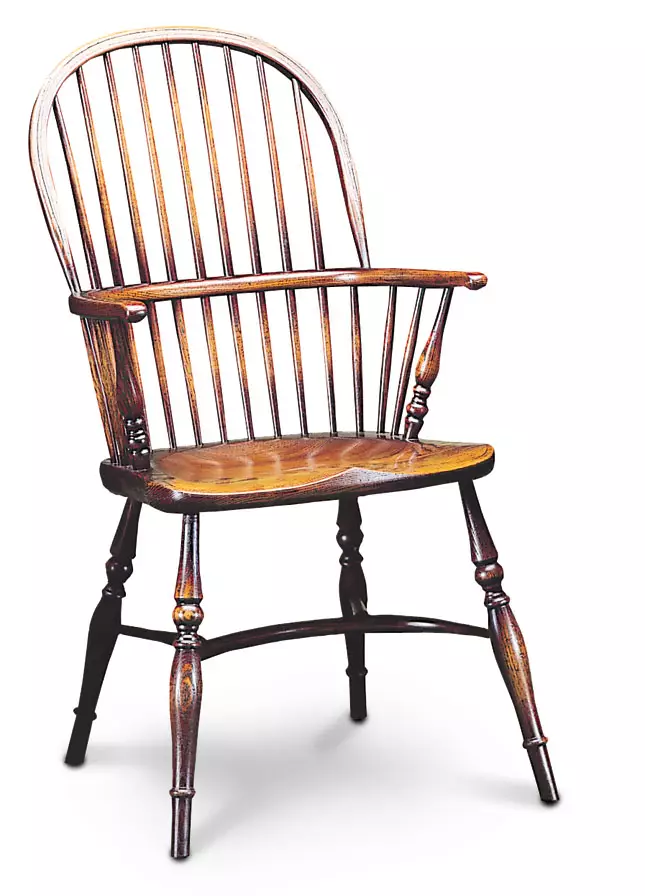Windsor Chairs
A Short History of Windsor Chairs

The Origins of Windsor Chairs
Conceived in the forests which provide the raw materials to make them, the Windsor Chair has been honed through centuries of craftsman working away at first in the woods, and then in large factories, all the time refining every detail to make them efficient to make: both in terms of materials and time, comfortable, strong and long lasting; all characteristics which have given them a timeless appeal.
The humble beginnings of Windsor chairs can be traced back to early 18th-century England. While the exact origin is debated, historians believe that Windsor chairs emerged in the English countryside, specifically in the Thames Valley region, originally as an outdoor chair, but quickly becoming a popular piece for the home.
Evolution of the Windsor Chair Design
Windsor chairs were an ergonomic design development when first created, commonly made using native timbers such as ash, yew, elm and walnut, with the timber’s rarity often adding to the status and value of the chair.
The chair is typically characterised by having a thick, one-piece, wooden seat into which the legs are mortised from below and turned spindles forming the back-rest are slotted in from above. Prior to the design of the Windsor chair, other chair styles were constructed as a framework of right angle joints, with the Windsor Chair instead centred around the seat with the legs joined into the underside and the back of the chair and arms joined to the top.
As Windsor chairs gained popularity, craftsmen began experimenting with different designs and features. The evolution of Windsor chair design can be observed through various periods and styles. From the basic stick-back chairs to the elegant comb-back and bow-back variations, each style added its own unique charm.
Stick Back Windsor Chair: The earliest Windsor chairs were simple and utilitarian, featuring a hoop-shaped back, with long, vertical spindles forming the interior of the back.
Comb Back Windsor Chair: As Windsor chairs gained popularity, craftsmen began incorporating design elements to enhance both comfort and aesthetics. The introduction of a comb-shaped crest rail at the top of the backrest added visual interest while providing additional support to the sitter.
Bow Back Windsor Chair: One of the most iconic Windsor chair designs is the bow-back chair. Developed in the mid-18th century, bow-back chairs featured a distinctive curved top rail, mimicking the shape of a bow.
Newsletter
Join our community
Be the first to discover our new arrivals and get access to exclusive events and offers.
Sign In
Have an account already?
Checkout faster with saved details
New to Gaze Burvill?
You can create an account later
